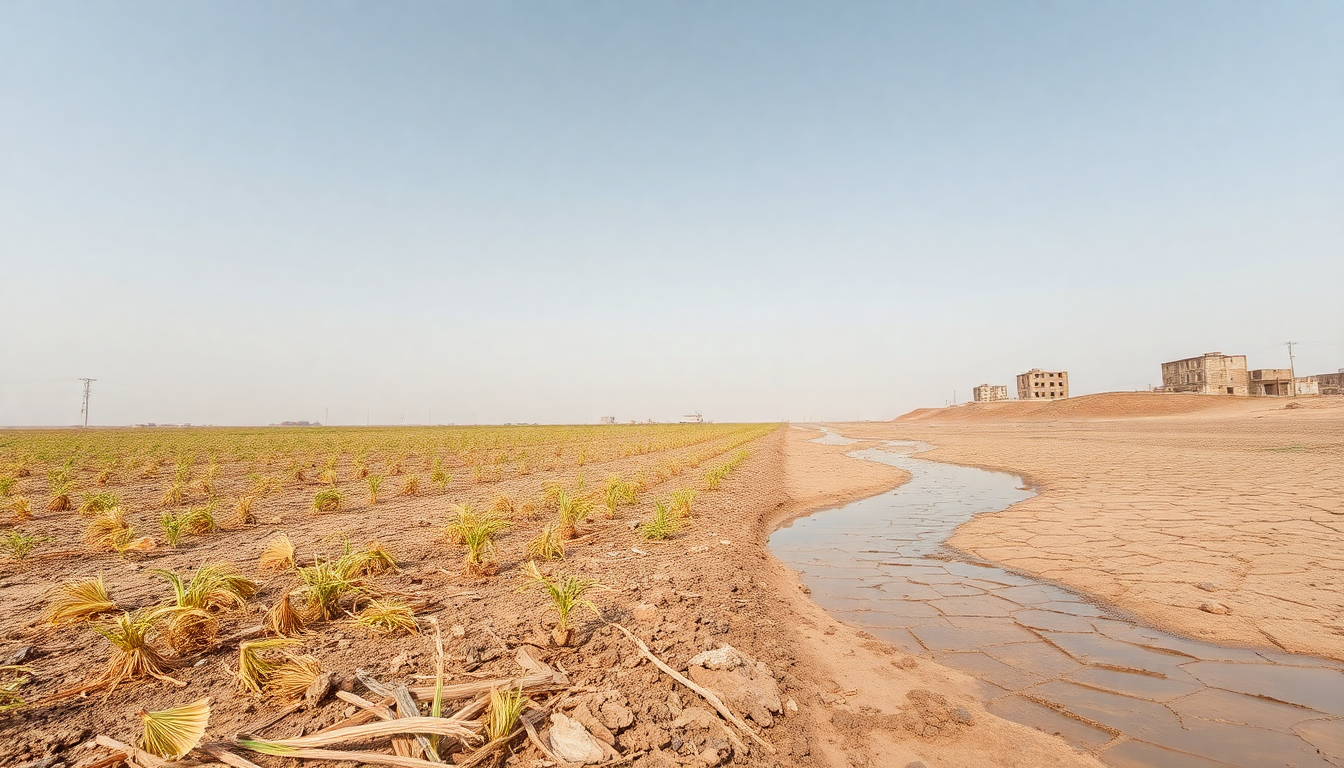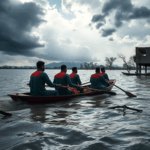Table of Contents
The water crisis in Iraq is hitting a breaking point, especially in the southern region of Basra. With insufficient rainfall and upstream water restrictions, the water supply has taken a severe hit. Experts are raising the alarm, warning that without immediate action from the government, things will only get worse.
As Iraq faces its driest year since 1933, the effects on agriculture, public health, and the local economy are nothing short of catastrophic.
The Water Crisis: An Overview
Basra, a crucial port city and oil hub, is at the center of this crisis.
With around 3.5 million residents, it has become the most water-scarce area in Iraq. Poor water management and environmental degradation have left many families depending on daily water deliveries just to get by—a situation that’s becoming increasingly hard to maintain.
Take Hasan Raykan, for instance. He often travels kilometers to find clean water, facing long lines and returning home with barely enough to meet his family’s basic needs. Can you imagine that kind of struggle?
The quality of the available water has plummeted, thanks to seawater intrusion compounded by oil spills and sewage discharge.
Balancing the limited resources for both livestock and household needs has become an everyday battle. As salinity levels continue to rise, the water is not only unsafe to drink but also poses serious health risks, leading to skin diseases and other complications.
What do you think this means for the families living there?
Environmental and Economic Consequences
The saltwater from the Gulf is steadily pushing into the Shatt Al-Arab River, putting the region’s ecological balance on the edge of collapse.
Experts estimate that Basra has already lost between 26 to 30 marine species due to rising salinity, creating an inhospitable environment for both freshwater and seawater species. This environmental disaster has dire economic implications, too—farming, once the backbone of the local economy, is increasingly under threat as water quality deteriorates and agricultural viability declines.
To combat these challenges, the Mihayla desalination station in the Abul Khaseeb district has been operational for over a year. It treats water from the Shatt Al-Arab River, producing around 72,000 cubic meters of treated water daily, serving about half of the district. But let’s be honest—the scale of the crisis far exceeds what this facility can handle. With alarming salinity levels in the river, we need comprehensive solutions now more than ever.
Why We Need Urgent Reforms
To tackle this escalating water crisis, we need both immediate actions and long-term reforms. Experts stress that the government must step up to manage water resources effectively and engage in national and regional water diplomacy. Establishing a national body focused on water management could help negotiate with neighboring countries, ensuring Iraq’s interests are safeguarded against upstream restrictions that contribute to this crisis. Why hasn’t this happened yet?
The historical neglect of water management, combined with political corruption, has created a perfect storm for this situation. As Hayder Al-Shakeri points out, the mix of reduced rainfall, rising temperatures, and upstream water restrictions highlights the urgent need for comprehensive reforms. If we don’t act soon, we could see a repeat of the humanitarian crises we faced back in 2018. Inaction is not an option anymore—the time for reform is now. What are we waiting for?





